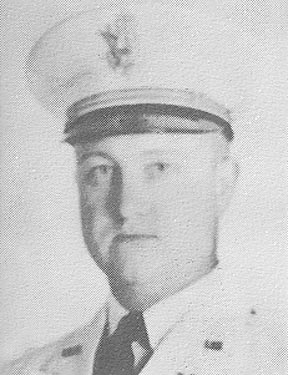 |
jacklummus.com Home Page Search Contact Us Site Map
Click the <Back> arrow to return to the previous page.
Biography of Miller Payne "Boots" Warren, Jr.
 |
Midlothian, Texas
Miller Warren was a
major in the United States Army, and graduated United States Military Academy,
West Point, New York in the Class of 1933. He entered the service of his country
from Midlothian, Texas.
In 1940 Captain
Warren was transferred to Fort McKinley near Manila, the capital city of the
Philippines, which stands on the eastern shore of Manila Bay on the island of
Luzon. At the time Captain Warren was assigned to Fort McKinley, his dependents,
wife, Hazel, and their two children, Jans and Jon, were allowed to join him.
Captain Warren served in the 57th Infantry Regiment, Philippine Scouts.
In the summer of
1941 many viewed war in the Pacific, and the Philippines as eminent. And so
Hazel and the children were moved back to the states. And in August of 1941
Miller was promoted to major, and assigned to the 21st Philippine Army Division.
His duties were to serve as a senior instructor, and prepare the division for
the approaching war with Japan.
The primary concern
for the Japanese in the Philippines was General MacArthur’s Far Eastern Air
Force. The Japanese had few fighter planes available to protect its invasion
forces, and so, it was paramount that they destroy MacArthur’s air force. And
so, shortly after daybreak on December 8, despite the weather, 14 Japanese heavy
bombers took off from Formosa to strike military installations at Baguio, which
is inland and east of Lingayen Gulf. And at about the same time, 18 twin-engine
light bombers rose into the fog blanketing Formosa to strike Tugugarao Airfield
in north central Luzon. At 10:15 a.m. the fog had lifted on Formosa, and 192
Japanese naval planes of the 11th Air Fleet took off to strike Clark and other
Army airfields in the area of Manila. The first day of air strikes by the
Japanese destroyed one-third of the Army’s fighter strength and one-half of
its bomber strength, and many of the surviving planes were damaged. Other
Japanese air strikes took place on subsequent days, and the Far Eastern Air
Force was rendered incapable of supporting MacArthur's troops or being a factor
in defending the Philippines.
On December 17,
there were 17 Flying Fortresses left in the Philippines, and within the next
three days all were dispatched to Batchelor Field near Darwin, Australia.
The main Japanese
landing force sailed from Formosa with one infantry division and a great many
special units in 76 transports for the landing at Lingayen Gulf. The convoy
arrived in the Gulf at about midnight on December 21, and at daybreak the main
Japanese landing began at Lingayen Gulf.
General
Wainwright’s North Luzon Force, which included the 11th and 21st Infantry
Divisions, engaged the Japanese comprising the main landing force, which
included the Japanese 48th Infantry Division. And two days later the Japanese
16th Infantry Division landed at Lamon Bay on the East Coast of Luzon, across
the island from Manila.
With two powerful
Japanese forces moving toward Manila from two different directions, and without
naval or air support, MacArthur evacuated Manila on December 27, declaring it an
open city in the hope that the Japanese would abide by international law, and
spare the buildings and people of Manila. He then ordered his army, which
included General Wainwright’s command with Major Miller Warren into the
ultimate defense area, which was Bataan.
The defense of the
Philippines ended for Major Warren when he became a captive of the Japanese on
April 9, 1942 following the surrender of troops at Bataan. He survived the
Bataan Death March, the Japanese POW camps of Cabanatuan north of Manila, Davao
on the southeast coast of Mindanao, and Bilibid in Manila. He was embarked
aboard the Japanese prison ship Oryoku Maru in Manila Bay on Wednesday, December
13, 1944. It sailed from Manila on Thursday with 1,619 American POWs packed in
the cargo compartments of the ship, and after steaming from Manila; it was
attacked by carrier planes from the USS Hornet, and it sank the following day.
Two hundred and
eighty-six of the American POWs were killed during the attack or shot in the
water by the Japanese while trying to escape. The survivors were loaded aboard
the Enoura Maru and the Brazil Maru. Major Warren was embarked in the Enoura
Maru, and on January 9, 1945 the merchant ship took a direct bomb hit from a
U.S. Navy carrier plane, which killed over one-half of the 500 POWs embarked in
the ship. Major Miller Warren was one of those killed.
U.S. Army records
show Major Warren’s final status as, “Missing in action or buried at sea.”
However, an eyewitness account stated that Major Warren was buried on a beach in
Takao Harbor, Formosa.
Miller Payne
“Boots” Warren, Jr. was the son of Mr. and Mrs. Miller Payne Warren of
Midlothian, and the spouse of Hazel Pratt Warren.
Major Warren was
awarded the Silver Star, Bronze Star, and Purple Heart. He is listed on the
Tablets of the Missing at Manila American Cemetery on Luzon, and the Ellis
County Veterans Memorial.
After Major Warren’s death, the survivors from the Enoura Maru were taken aboard the Brazil Maru, and arrived in Moji, Japan on January 29, 1945. Approximately 432 of the original 1,619 arrived in Japan alive, and of that number 271 survived the Japanese work camp, and were liberated in August of 1945.
The bio information is courtesy of Stuart Pryor, Grandview, Texas, who is a nephew of Major Warren.
*For additional information on the Oryoku Maru, read "The Oryoku Maru Story" compiled by four survivors.
Click the <Back> arrow to return to the previous page.
© 1999-2004 Utility Press Inc. All rights reserved.